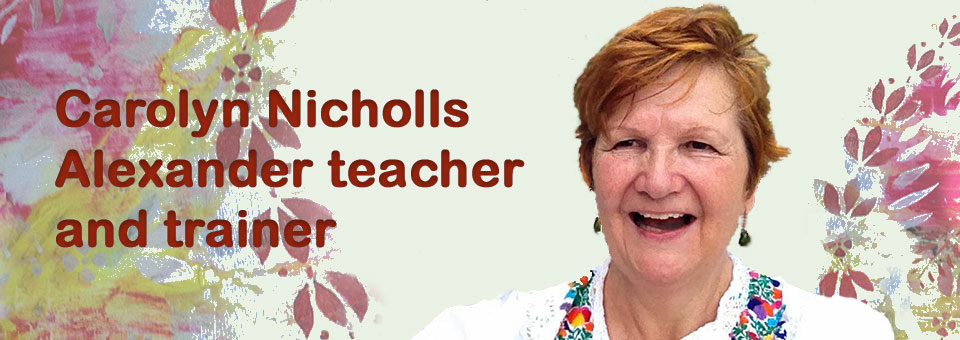To read the full study click here.
Ten years ago, In 2003, I undertook an MA in Alexander Technique Teacher Training at the University of East London. I gained a distinction for my thesis, which I wrote in the form of an opera libretto.
The libretto was set to music by composer Leon Coates and performed at the 2004 International Congress in Oxford. Directed by Lee Waren, it was performed by AT teachers and the orchestra was also made up of AT teachers- we are a creative bunch and to all those wonderful people who helped out, I thank y0u all.
This is the abstract of my thesis ande opening of the libretto and the abstract of my thesis
OVERTURE
GRAVITY AND LIGHT
An Opera based on The Alexander Technique.
In one Act
The Mirrored Chamber
The opera tells the story of Emily, a young girl who has a burning
ambition to practise magic. She has heard of a powerful magician
named Frederick, who had the ability to transform people with the
touch of his hands. He was a mysterious figure, who had spent many
years locked in a room gazing at his own reflection in mirrors.
Mirrors were all around, revealing secrets that he alone could
understand (1.) He helped the lame to walk and the stutterer to
speak (2). He freed the sick from their prison of pain, and helped the
breathless to breathe (3.) He enlivened the minds of the dull and
caused the philosopher to think yet more deeply (4.) He was a strange
and powerful man, now partly wrapped in the mystery of the past;
his innermost secrets known only to a few. His hands brought about
the transformations he made, and Emily wondered if she too could
perform his most powerful spell; transforming gravity into light.
(1) Alexander 1932 The Use of the Self. ch.3 Evolution of a Technique. Alexander describes a ten-year period
of self-observation using mirrors.
(2) Alexander 1932 The Use of The Self ch.4 The Stutterer
(3) Alexander 1995 Articles and lectures v A Respiratory Method
(4) Alexander 2002 Aphorisms. ‘I don’t care what man you bring up, Socrates or anyone else: you will find
gaps and holes in his thinking. Let me co-ordinate him and you will not find gaps and holes in his
thinking’.
University of East London
Abstract
Gravity and Light
ANALYSIS OF TRAINING OF THE
SPECIALISED USE OF THE HANDS IN
ALEXANDER TECHNIQUE TEACHING
by Carolyn Nicholls BA(Hons) MSTAT
Supervisors: Susan Ryan and Jacqui Potter
Department: School of Health and Bioscience
The Alexander Technique is taught to a diverse range of individuals for diverse
reasons, yet practitioners will teach a client who presents with back pain in the same
way they would teach a client who wishes to enhance a musical skill. Central to the
teaching is the use of the teacher’s hands on the client.
This study examines how the skill of using the hands as an Alexander Technique
Teacher is taught and learned. The purpose of the study is to analyse and interpret
the factors involved in acquiring this skill; the relationship of this skill to the
individual’s own Use, the significance of this skill in relation to teaching and learning
The Alexander Technique and the significance of this skill as an aspect of teacher
training.
The study examines data collected by video recording and tape-recorded
interview. Participants were novice and advanced students in a learning
situation with two experts, and an experienced teacher giving a lesson to a
client. There is a 15-minute CD/Video edited compilation, entitled Hands Up!
How Alexander Teachers learn to Use their Hands accompanying the study for
educational purposes. Full material is stored in retrievable archive form.
An article entitled Helena’s First Lessons, for the professional publication The
Alexander Journal is submitted alongside the study. This is written in the form of a
diary of lessons from the teacher’s perspective, describing the use of the hands on a
pupil and how that skill is incorporated through the course of lessons.
The Alexander profession is currently engaged in producing National
Occupational Standards. The study and the accompaniments serve to inform
both the Society of Teachers of the Alexander Technique (STAT) and
external bodies. The study identifies developmental milestones in learning and
suggests how this recognition can enhance future training. This is the overall
objective of the study.
